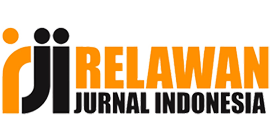Integrasi Steam dalam Pembelajaran Matematika untuk Meningkatkan Kreativitas dan Inovasi
DOI:
https://doi.org/10.31539/judika.v8i3.15485Abstract
This study aims to enhance students' creativity and innovation in mathematics learning through the integration of the STEAM approach at SMP Negeri Unggul Tunas Nusa. The research employed a quantitative experimental method with a one-group pre-test-post-test design. The sample consisted of 25 eighth-grade students from Tunas class. The research instruments included pre-test and post-test assessments to measure students' creativity and innovation. Data analysis was conducted using the Wilcoxon test with the assistance of SPSS software. The analysis results showed a significance value of 0.000 (< 0.05), leading to the rejection of the null hypothesis (H₀) and the acceptance of the alternative hypothesis (H₁). These findings indicate that the integration of the STEAM approach significantly improves students' creativity and innovation in geometry learning. Thus, the STEAM approach can serve as an effective strategy to create more active, creative, and contextual mathematics learning.
Keywords: STEAM, Mathematics Learning, Creativity, Innovation.
References
Ajir, B., Salmawati, S., & Ishak, S. (2025). Literature Review: Inovasi Pembelajaran STEAM (Science, Technology, Engineering, Art, and Mathematics) pada Mata Pelajaran Matematika di Sekolah Dasar. Jurnal Ilmiah Matematika (JIMAT), 6(1), 219-226. https://doi.org/10.63976/jimat.v6i1.778
Anjarwati, A., Qomariyah, R. S., Putri, M. K., Rohman, A. P. E., & Royyana, M. D. (2022). Integrasi Pendekatan Steam-Project Based Learning (PjBL) untuk Meningkatkan Kreativitas siswa kelas V SDN Sukabumi 2 Probolinggo. Prosiding Seminar Nasional Sosial, Sains, Pendidikan, Humaniora (Senassdra), 1(1), 1031–1038. https://prosiding.unipma.ac.id/index.php/SENASSDRA/article/view/2221
Arlinda Bayu Prastiwi, S. Y. (2024). Efektivitas Model Pembelajaran Pjbl Terintegrasi Steam untuk Meningkatkan Keterampilan Berpikir Kreatif dan Hasil Belajar IPA Siswa Kelas V Sekolah Dasar. Jurnal Ilmiah Pendidikan Dasar, 5(Juni), 2189–2202. https://jurnal.stkippgritulungagung.ac.id/index.php/jipendas/article/view/287.
Astuti, A. D., & Friska Alifia Sekar Melati. (2023). Pengaruh Layanan Bimbingan Kelompok dengan Teknik Problem Solving terhadap Minat Belajar Siswa. G-Couns: Jurnal Bimbingan Dan Konseling, 7(03), 467–477. https://doi.org/10.31316/gcouns.v7i03.4659
Azzahra, N. I. (2024). Implementasi STEAM pada Pembelajaran Matematika dalam Menunjang Keterampilan Abad 21. Prosiding Seminar Nasional Matematika, 7, 335–341. https://journal.unnes.ac.id/sju/index.php/prisma/
Dewi, S. N., & Sutriyani, W. (2024). Efektivitas Model Pembelajaran STEAM (Science, Technology, Engineering, Art, and Mathematics) terhadap Hasil Belajar Matematika Sekolah Dasar. Jurnal Syntax Admiration, 5(7), 2752–2759. https://doi.org/10.46799/jsa.v5i7.1340
Gunadi, F., Lestari, W. D., & Yahkya, Z. S. (2022). Kesulitan Belajar Matematika Siswa pada Materi Trigonometri Berdasarkan Self-Esteem dan Gaya Belajar. Pedagogy: Jurnal Pendidikan Indonesia, 7(2). https://doi.org/10.24036/pedagogi.v7i2.1220
Murwaningtyas, C. E., Gunawan, M. T., Maharani, W., Tapo, M. M., Turnip, G., Rudhito, M. A., & Julie, H. (2025). Pelatihan Inovasi Pembelajaran Steam Melalui Pendekatan Proyek dan Kajian Masalah Berbasis Kearifan Lokal. Martabe: Jurnal Pengabdian Kepada Masyarakat, 8(1), 309-321.https://repository.usd.ac.id/52717/1/12357_18519-55945-1-PB%2B%281%29.
Fithri, N., & Salsabila, N. (2024). Pelatihan Steam untuk Membangun Kreativitas dan Inovasi Anak SD di SDN 1 Perampuan Kabupaten Lombok BARAT. Jurnal Interaktif: Warta Pengabdian Pendidikan, 4(2), 86-94.. https://jiwpp.unram.ac.id/index.php/jiwpp/article/view/207.
Nurhaliza, E., Indriyanti, N. Y., & Ariani, S. R. D. (2024, November). Literature Review: Pembelajaran IPA berbasis Pendekatan Etno-STEAM Untuk Mencapai Keterampilan Abad-21. In Seminar Nasional Pembelajaran Matematika, Sains Dan Teknologi, 4(1), 134-152).http://ejurnal.fkip.unila.ac.id/index.php/SINAPMASAGI/article/view/801
Oktiningrum, W., Muslihasari, A., Pramoda, D. A., & Wibowo, A. (2024). Engineering , Arts and Mathematics (Steam) terhadap Kemampuan Berpikir Kreatif Mahasiswa Calon Guru Sekolah Dasar Universitas Islam Raden Rahmat Malang. Edutainment : Jurnal Ilmu Pendidikan Dan Kependidikan, 12, 10–19. https://doi.org/10.63976/jimat.v6i1.778
Rahmatillah, C. R., & Ardiansyah, A. S. (2023). Telaah Bahan Ajar dengan Model Challenge Based Learning bernuansa STEM berbantuan Geogebra terhadap Kemampuan Berpikir Kreatif Siswa. PRISMA: Prosding Seminar Nasional Matematika, 6, 40–46. https://journal.unnes.ac.id/sju/prisma/article/view/66692https://journal.unnes.ac.id/sju/prisma/article/view/66692
Rubens, A., Schoenfeld, G., Schaffer, B., & Leah, J. S. (2020). Using Industry Analysis and Manager Interviews for Career Planning: A Classroom Exercise. E-Journal of Business …, 14(1), 108–127. https://eric.ed.gov/?id=EJ1276444
Tang, M., & Hofreiter, S. (2021). Creativity and innovation: Chinese and German Conceptions and approaches. In Innovation und Kreativität in Chinas Wirtschaft: Deutsch-Chinesische Kooperationen: Grundwissen, Erfahrungen und Erkenntnisse (pp. 1-34). Wiesbaden: Springer Fachmedien Wiesbaden.https://doi.org/10.1007/978-3-658-34039-1_1
Utami, P. Y., & Amidi, A. (2022, February). Kajian Teori: Pengembangan Bahan Ajar Matematika Bernuansa STEAM Berbasis Outdoor Learning dengan Model PBL untuk Meningkatkan Koneksi Matematis Siswa. In PRISMA, Prosiding Seminar Nasional Matematika, 5. 551-558.. https://journal.unnes.ac.id/sju/index.php/prisma/article/view/54690
Wliliawati, H., & GA, R. P. (2020). Implementasi Pendidikan STEAM untuk Meningkatkan Konsep Penguasaan Implementasi Pendidikan STEAM untuk Meningkatkan Konsep Penguasaan. In J. Seri Konf. IOP Ilmu dan Tek. Mater, 288, 1-7).https://doi.org/10.1088/1742-6596/1811/1/012058
Downloads
Published
Issue
Section
License
Copyright (c) 2025 Bariyah, Lia Hamimi

This work is licensed under a Creative Commons Attribution-NonCommercial 4.0 International License.


